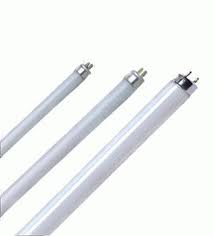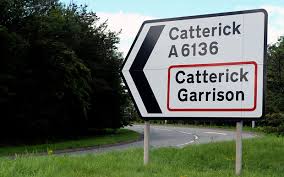The Trouble with Trees
Once you’ve convinced the security people to allow it to be installed (means seperate computers that only talk to the others in the office via the Internet and all the security filters there) radio communications make energy management on a site like Catterick Garrison possible. On a site like that most of the meter systems are nowhere near IT connections or even phone lines and readings taken by squaddies are notoriously unreliable (the subject of another blog I think) so ways to connect wirelessly were extremely useful. Wifi systems didn’t have the range to get between barracks so we were into radio.
When I arrived the 30 odd water meters were already connected to my office via a large aerial on the roof and UHF transmitters (I’m told in the same range as car remote locking fobs) at each meter. The trouble was that while they all got signals back on dry days in winter , leaves and especially wet leaves dropped the signal strength down dramatically. Oddly the nearest meter to the office was actually one of the worst performers when it was raining. The sight of the engineer from the metering company heading off to fix a signal issue with a stepladder and a bow saw was only beaten when the GWLO (Garrison Works Liasion Officer -actually a Warrant Officer) followed him with a map of the trees with legal protection.
Most of the meters remained unscathed from human interference despite sometimes being “outside the wire” and near areas frequented by the public – possibly this was due to the amount of CCTV around or maybe due to the inherent respect around army bases? This did not apply once- to a meter just out of sight of the chippy and near one of the “watering holes” where the aerial was broken off two weeks in a row. And of course this was in view of one of the CCTV cameras (admittedly most of the time it pointed in the opposite direction where much more interesting things were likely to happen). So we replaced the aerial support with a length of scaffolding pole (gaining a better signal due to greater height) concreted into the ground. As it takes a while for the concrete to set, I had to go to the CCTV control room ( I actually got into the inner sanctum where they normally only allow MP’s to show them the misbehaviour on the screen) to ask them to keep an eye on the meter overnight. They reported the following day that they’d spoken over the speakers (all mod cons) to a group of youths and actually sent a patrol to check on them – isn’t being in a secure environment good?
Little Things Mean a Lot
 If we are to achieve the draconian emissions required under the Kyoto Protocol and ,if the worst predictions of Climate Change are right, save the planet, we need to do a lot of expensive and radical projects each saving a significant quantity of energy. But does that mean we should give low priority to low value projects that each produce a low quantity of savings?
If we are to achieve the draconian emissions required under the Kyoto Protocol and ,if the worst predictions of Climate Change are right, save the planet, we need to do a lot of expensive and radical projects each saving a significant quantity of energy. But does that mean we should give low priority to low value projects that each produce a low quantity of savings?
It is often stated that “Good Housekeeping” measures can easily save 10-15% of consumption in an average business. That is far away from the targets of 30-50% that many companies and countries aspire to. To achieve that sort of saving significant (probably expensive) re-engineering will be needed in most situations. Even advanced technologies like CHP generally only reduce emissions by around 25% unless less proven technologies like Biomass are included.
So do we reserve all our available capital for major projects that will get close to the target rate of saving?
No! Major projects take Major Effort and involve a lot of people. That all means that there is a great risk that the project will fail at some point during the development process and nothing will be done.
So rather than focusing our efforts on high profile high technology programmes gambling on high returns we can bank many smaller measures each making a contribution to a significant overall return. Our risk is spread wider and our returns while smaller are better assured.
To add to that if we carry out numbers of small value projects we can often ring-fence the value of the savings to finance other work.
To add to this I reference Sir Dave Brailsford – the man who turned the “also-ran” British Cycling Team into World Beaters (and won the Tour de France 3 times in 4 years) whose principle was to make 1% savings on everything he could and try to accumulate fractions of seconds.

So what sort of measures are best to start with? My simple advice is to put your head into the loft (Why does that sound like “Stick your Head in a pig”?) and check the insulation there. If there is less than 10 inches, throw 10 inches on top. Now that is by definition almost invisible to building occupants but will save energy, may well reduce complaints of being cold – and being too hot in Summer where the issue is solar gain through the roof. The trouble is you won’t get any credit if the occupants notice they may well think “They’ve sorted the heating at last”.
And that leads to my second “invisible” suggestion. Get at the BMS (after reading my “BMS Blunders” series and check the settings match the usage (temperature, hours, days)
There are many other “Little things” that add up to make a real difference but I’ll save them for another Blog.
I’m Sorry but You’re Wrong!
A statement I’ve had to make a number of times in the past to people in error but with the best of intentions. There are a number of fallacies in relation to energy management that are widespread and often believed to be the gospel truth.
The first (and perhaps the most obviously false) relates to fluorescent tubes. It is widely believed that the energy used to turn on tube is the equivalent of long period of usage (often hours) – well that just isn’t true! A chat with a friendly electrician would soon make obvious the point that were the fallacy true the “inrush current” required to use that amount of energy in the few seconds it tkes for tube to come to full light would blow the fuses! To get technical a 5ft T5 fluorescent takes 800 Joules to “light” – which sounds a lot until you realise that a Watt is 1 Joule per second so a 50W tube uses 50×60 Joules per minute (3000J) – so the extra energy relates to about 20 second of use!
 There was a nugget of truth in that for early tubes the act of turning them on did significantly shorten their lifespan but that is no longer true (Apparently you’d have to turn a T5 on and off round a dozen times a hour to make a difference – if you have the time to do that – GET A LIFE!) and if you have older where it is true please wear them out so they can be replaced with more efficient units.
There was a nugget of truth in that for early tubes the act of turning them on did significantly shorten their lifespan but that is no longer true (Apparently you’d have to turn a T5 on and off round a dozen times a hour to make a difference – if you have the time to do that – GET A LIFE!) and if you have older where it is true please wear them out so they can be replaced with more efficient units.
The second fallacy is one that I hear from heating engineers (especially those that work for gas supply companies -cynically I wonder why?) , who are known to advise customers that the most efficient way to operate a building’s heating is to keep the building heated all the time. The logic apparently is that it takes more energy to heat a building’s fabric back to occupancy level after it has been allowed to cool than it does to replace the heat lost to the outside while it is kept heated. Pardon? Where is this extra heat supposed to go? The heat that goes into the fabric must balance the heat that was lost to outside and obviously the colder the building is the less heat is lost….
There is the efficiency of the boiler plant to consider (which can be a complicated question) but as boilers are at their most efficient at their design load (and a good control system will make sure the boiler operates at that point) that probably supports the “turn it off” argument.
What is true is that if the boiler plant is undersized or the building poorly insulated (or draughtproofed) keeping the heating on will maintain comfort levels better during the period of occupation as it is possible that the heating will be unable to get the building back to temperature from cold in extreme weather. But it will use a lot more energy than if it is allowed to cool when not occupied.
The last example is rather specific and relates to a site so secret that I won’t mention it’s name or the Moor on which it resides (but you will have heard of it).
That site had a need for high levels of very secure electrical supply and therefore had gas turbines (powered by either mains gas or stored oil in case of war) generating its power. When I arrived on site I was struck by how hot the rooms were and that people were (even with an energy manager visiting) unashamedly opening windows to cool down in winter. ” It’s all right, the GT’s produce a lot of waste heat and that is collected and used to heat us” (In other words it was a power led Combined Heat and Power system).
The only problem was when I investigated (and this maybe should have been in “What’s the Value in Value Engineering?”) as a cost cutting exercise the waste heat boilers had been omitted and the heating was provided by the gas boilers installed as back up….
